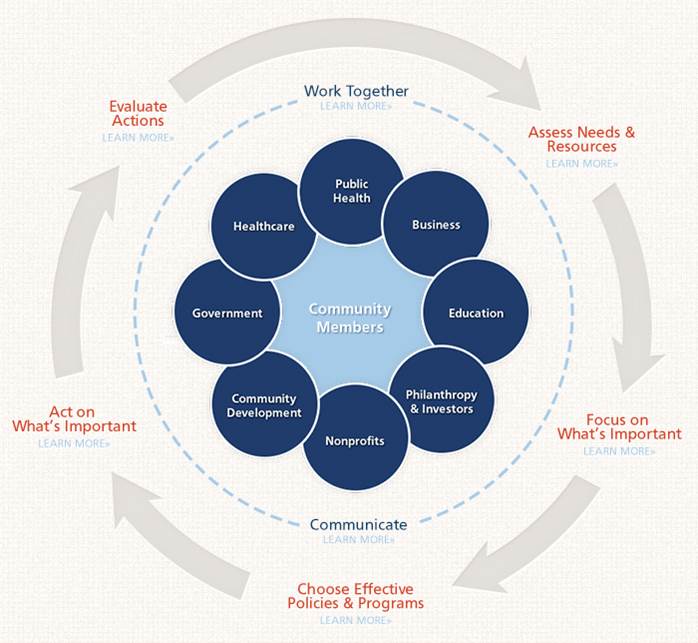Why invest in community health?
Discover the proven link between community and workplace health
It’s time to join forces.
Why does the United States spend more on health care than any other nation, but still rank 27th in life expectancy? Why does the United States spend only three percent of its health care budget on prevention, but 75 percent to treat preventable conditions?
The answer, in short, is because our current health system is reactive (focused on treating individual diseases and conditions) rather than proactive (focused on preventing disease before it starts). And that imbalance is hitting both communities and businesses in the pocketbook.
HWHC is here to help employers and community leaders join forces to address better health – where we live, learn, work and play. The private sector is in a unique position to lead the charge, but first, business leaders need to understand the link between business and overall community health. And, depending on the readiness of your organization, you may also need to demonstrate to company leaders the business case for investing in community health.
HWHC is here to help.
Sources:
OECD Better Life Index, 2013
County Health Rankings & Roadmaps, 2015
Learn More
County Health Rankings & Roadmaps Action Cycle, 2015
Building the business case
Executive leaders are at different positions along a continuum of insight and business case development related to the intentional and strategic investment in community health.
The Blue Zones Project
The Blue Zones Project by Healthways is a community well-being improvement initiative designed to make healthy choices easier through permanent changes to environment, policy, and social networks. The Blue Zones Project is inspired by research about the regions of the world with the five highest concentrations of centenarians (people who live to be 100 years or older). There are five Blue Zones regions: Loma Linda, California; Okinawa, Japan; Nicoya, Costa Rica; Sardinia, Italy; and Ikaria, Greece. The Blue Zones Project environmental approach to well-being improvement uses tools based on nine healthy lifestyle habits shared by the people living in the original Blue Zones areas.